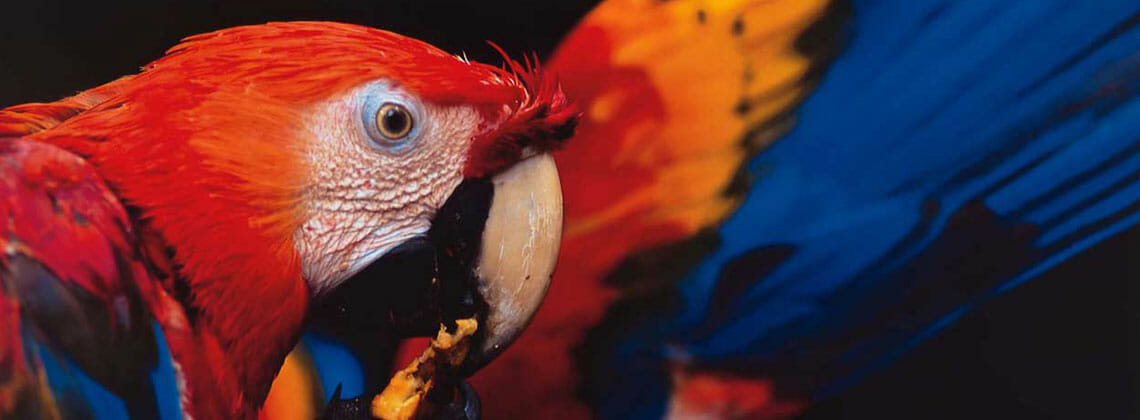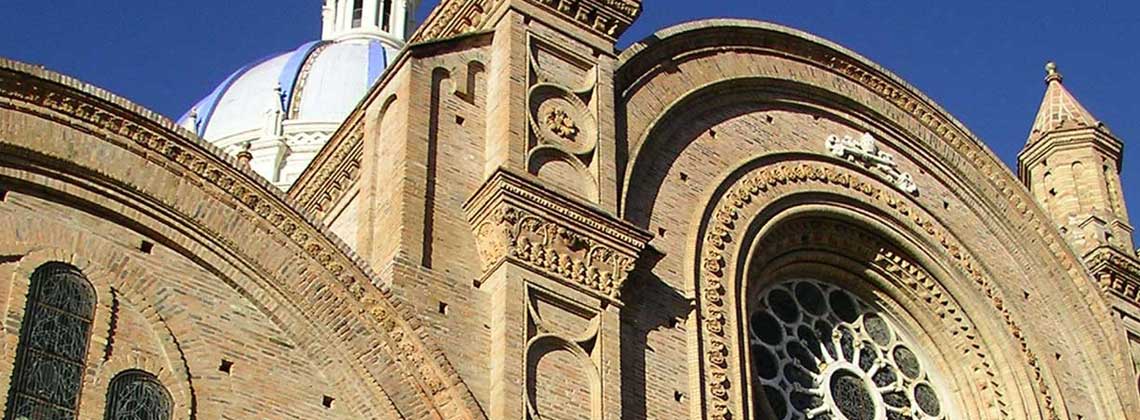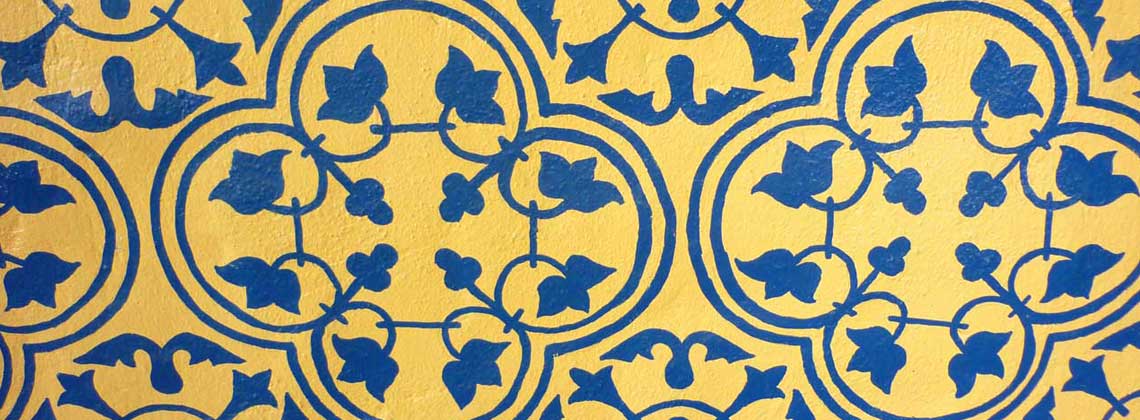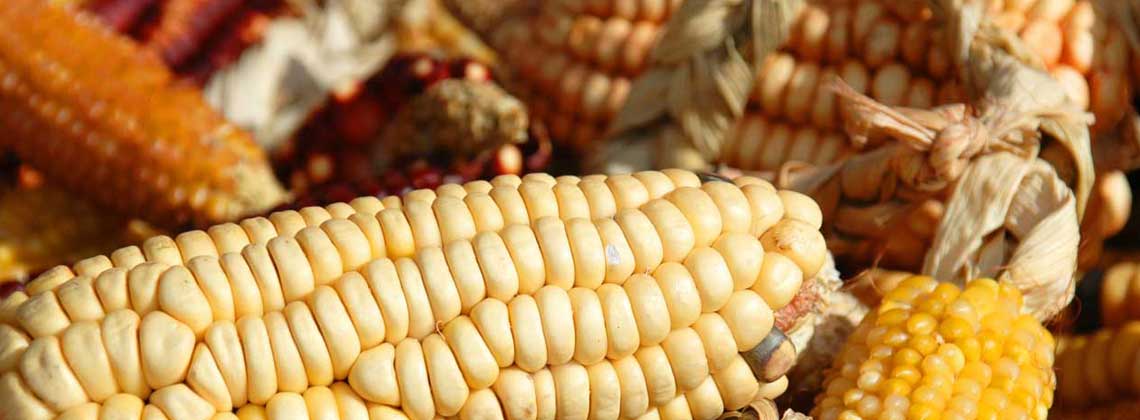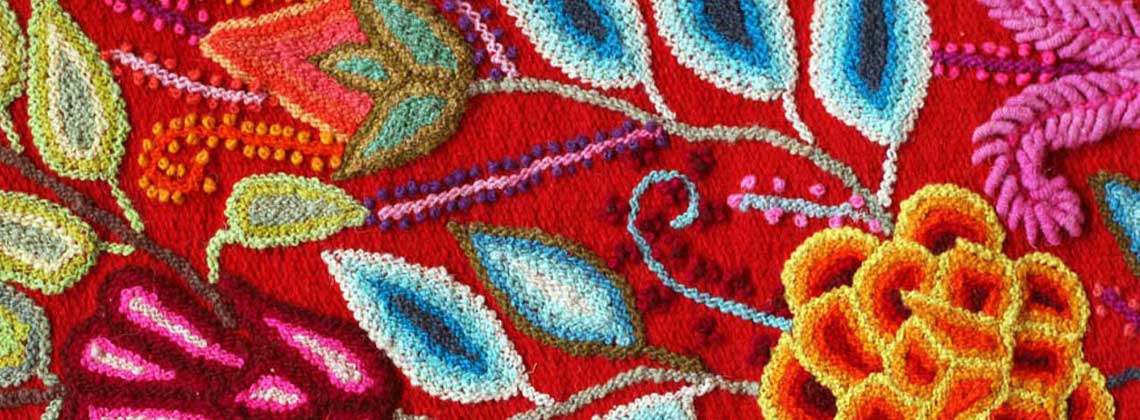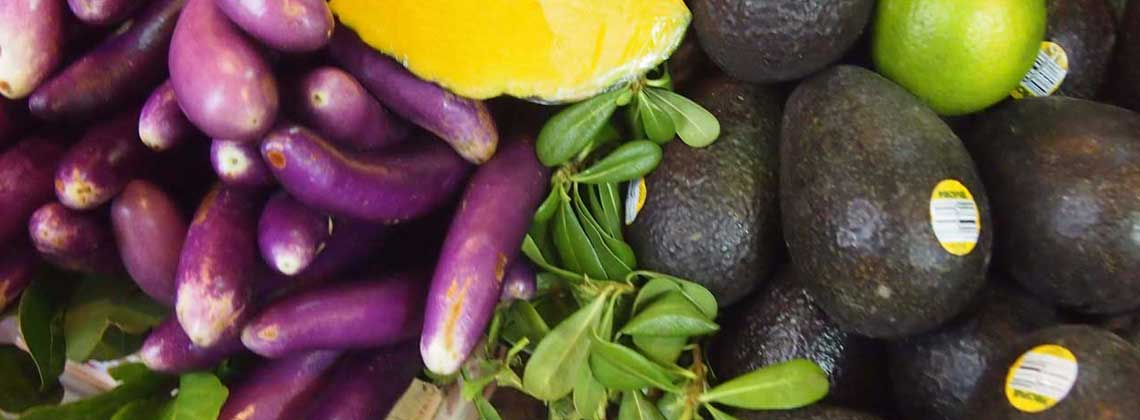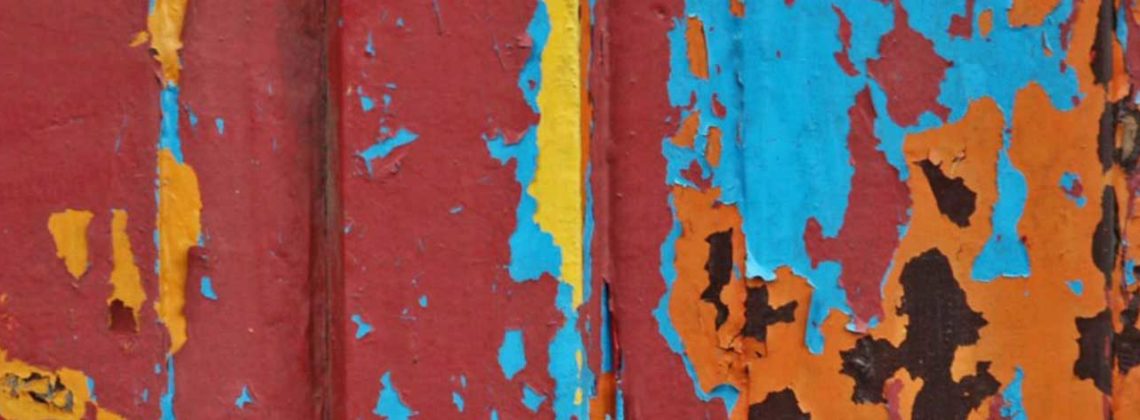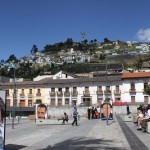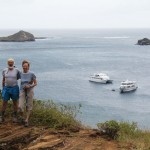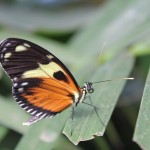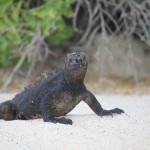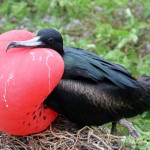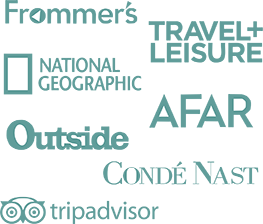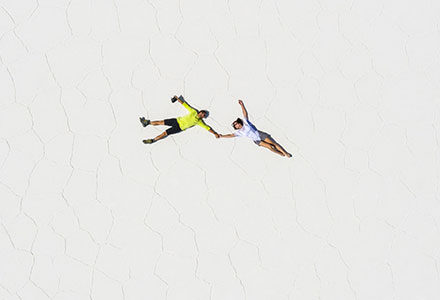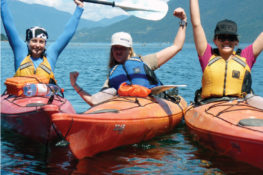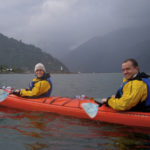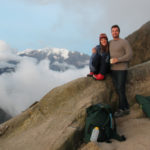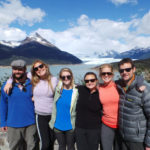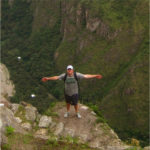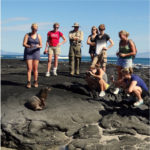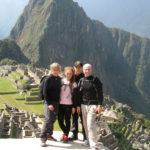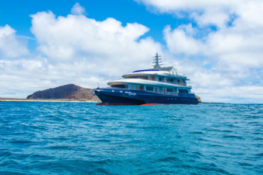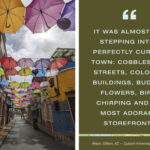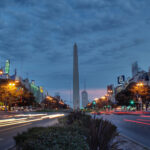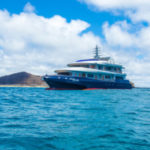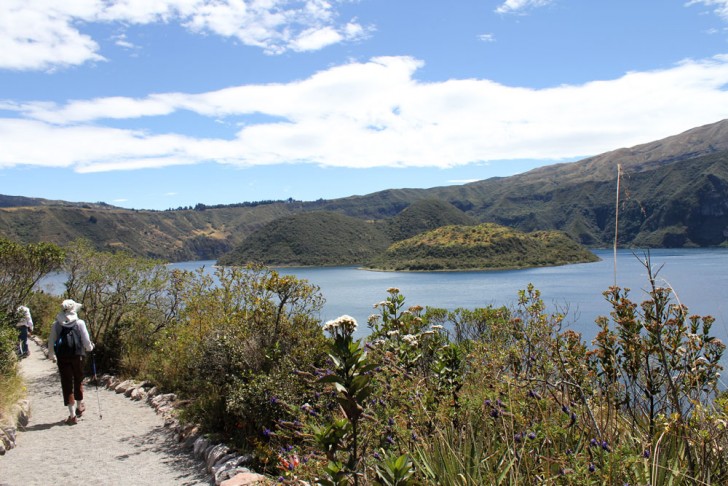
On this one-of-a-kind, personalized trip to South America, the Schaffers experienced four dynamic regions of Ecuador including Quito, the Cloud Forest, Otavalo and the Galapagos Islands. Read on to discover the magic of Ecuador through their lens. View photos and read a day-by-day breakdown of their trip itinerary below.
The Schaffers arrived in Quito, Ecuador around 9:00am where they then embarked on a half-day privately guided tour of Quito. The next day they embarked on a small road-trip to the Cloud Forest where they spent two magical nights at the Bellavista Cloud Forest Lodge. On the fifth day of their journey they departed on a 4-hour scenic drive north to Otavalo where they stayed at Hacienda Cusin, a restored 17th century hacienda. After their time in Otavalo they made their way to the Galapagos Islands where they spent the remainder of their trip exploring San Cristobal, Santa Cruz, Lobos Island and more via the Anahi Catamaran.
Take a look at their full, detailed Ecuador and Galapagos Islands travel itinerary below.
Do you want to travel to Ecuador or the Galapagos Islands? We’re regional experts here at Knowmad Adventures and pride ourselves in building custom trips that are a perfect fit for our travelers. If you’re interested in crafting an Ecuador adventure, but this particular itinerary doesn’t strike your fancy, don’t hesitate to reach out to our Trip Specialists at 612-394-2894 or [email protected] to begin planning your trip today!
SChaffer’s Ecuador + Galapagos Islands Trip Itinerary
DAY 1 USA – Quito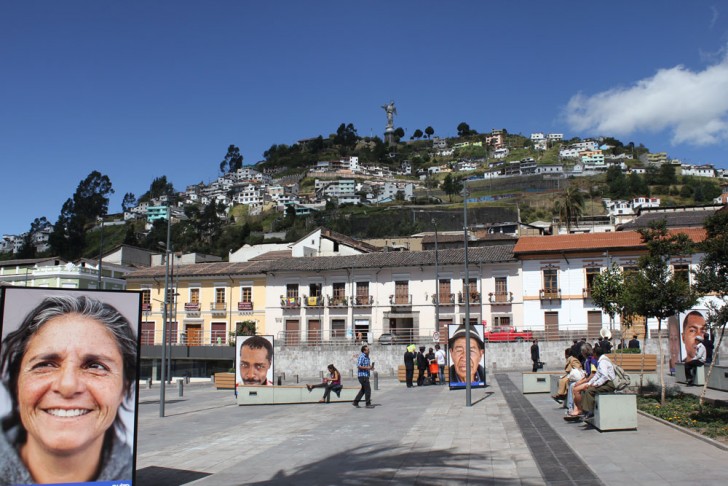
You will fly from the USA to Quito arriving at 9:50 p.m. Upon your evening arrival to Quito you will be met at the airport and transferred to your hotel in the heart of the old historic center of Quito.
- No meals – Casona de la Rond
DAY 2 Quito
Today you will be picked up from your hotel at 9 a.m. Enjoy a half-day guided tour of Quito as you walk down quaint cobblestone streets lined with brightly colored colonial houses and balconies dressed in flowers. Visit the Plaza de la Independencia and the impressive, La Catedral de Quito, one of the oldest cathedrals in South America. Then see the Presidential Palace along with other historically and architecturally rich buildings lining and surrounding the square. Visit the art museum in Plaza de San Francisco showing a mix of both indigenous and European styles. Enjoy the afternoon to explore independently.
- B – Casona de la Ronda
DAY 3 Quito – Bellavista Cloud Forest
You will be picked up from your hotel in Quito at 6:15 a.m. (time subject to change, transfer shared service). Leaving Quito, you will descend a scenic mountain road. Reaching the turn to Bellavista you climb to the top of the mountain for fabulous views, where Bellavista’s lodge is perched. Settle into your room and enjoy the flurry of the hummingbirds or take a hike into the forest on the varied trails. After lunch you can take a hike on your own into the forest, or go on one of the all-included guided hikes. Your guided hike will acquaint you with the exuberant vegetation of the cloud forest, its bird life and the fascinating adaptations to life in this special environment. Return to the lodge for a relaxing evening.
- B, L, D – Bellavista Cloud Forest Lodge
DAY 4 Bellavista Cloud Forest
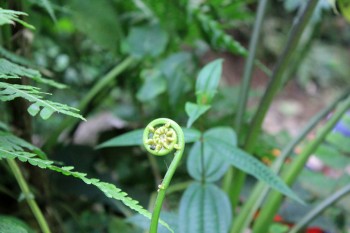
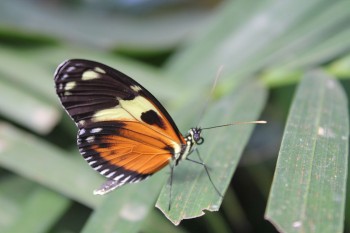
Wake up to the sounds of nature or go for an early morning bird hike, followed by a delicious breakfast. Afterwards we recommend hiking to a waterfall hidden in the forest or walking the self-guided trails. After lunch, an afternoon hike deep into the valleys of the reserve is recommended. Enjoy a relaxing evening to spot night birds and other nocturnal wildlife.
- B, L, D – Bellavista Cloud Forest Lodge
DAY 5 Bellavista Cloud Forest – Otavalo
Wake up for another early morning bird hike, or simply relax at the lodge. After breakfast take an additional hike or soak in the sights and hummingbirds from your lodge. Depart at 2 p.m. (time subject to change) after lunch for a scenic 4-hour drive north to Otavalo. Arriving to your 17th-century restored hacienda, take the evening to unwind and enjoy the grounds.
- B, L – Hacienda Cusin
DAY 6 Otavalo, Peguche & Cotacachi
Today you will be picked up at 9 a.m. and visit the Otavalo market, the biggest and most important indigenous market in all of Latin America. The colorful main handicraft and textile market spills into the streets from the central Plaza de Ponchos whilst the cacophony of the animal market is kept to the outskirts of town. The produce market impresses with the sheer number and color of the locally cultivated fruits and vegetables. The friendly Otavaleños are more than happy to talk about their crafts and traditions and will expect you to haggle a bit on the price.
After lunch we continue to the town of Peguche to visit a textile and handicraft workshops and learn, from the hand of the owners, the ancient techniques and secrets used in the making of these wonderful pieces. A good example of this is the use of an insect for dyeing the wool. In this town we will also stop by an Andean musical instrument workshop, where the musicians, who also build the instruments, will do a short performance for us. Before heading back, we will stop for some last minute shopping in the town of Cotacachi, a town famous for its leather products.
- B, L – Hacienda Cusin
DAY 7 Otavalo – Cuicocha – Quito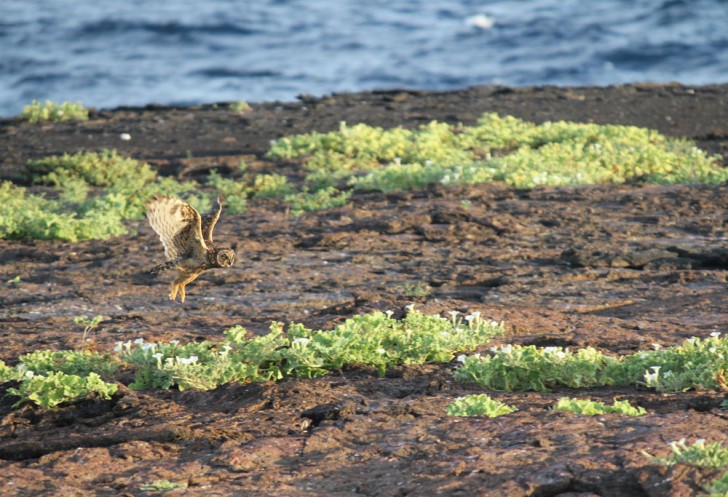
After breakfast, you be picked up at 9 a.m. and a short drive will take you to the idyllic Cuicocha crater lake. The lake, with its beautiful crystal waters, has two small islands created by volcanic domes, and has a depth of approximately 200 m. With a clear sky during the trek, you will be able to see the snow-capped peaks of the volcanoes Cayambe, Cotopaxi and the craters of Cotacachi and Imbabura. After lunch we start our journey back to Quito taking the road back to Cayambe and on to the capital.
- B, L – Casona de la Rond
DAY 8 Quito – Galapagos
You will be picked up at your hotel at 7 a.m. in accordance to your 10:25 a.m. onward flight to the Galapagos. The flight from Quito to the Galapagos is approximately 2 1⁄2 hours on a Boeing 727. Upon arrival at Baltra travelers pass through an airport inspection point to insure that no foreign plants or animals are introduced to the islands. Your park entrance fee of $100 and $20 for the INGALA card will have been pre-paid. Guides will meet you, collect your luggage, and escort you on the short bus ride to the harbor. Motorized rafts, called ‘Pangas’ will transport you to the M/C ANAHI and our crew will welcome you onboard. After departure and lunch, make your first island stop.
PM: Bachas Beach, Santa Cruz Island
These two small beaches are found to the West of Turtle Cove. Their sand is made of decomposed coral, which makes it white and soft, making it a favorite nesting site for sea turtles. Behind one of the beaches there is a small brackish water lagoon, where occasionally it is possible to observe flamingos and other coastal birds, such as black-necked stilts and whimbrels. The other beach is longer, but it has two old barges that were abandoned during the Second World War, when the USA used Baltra Island as a strategical point to protect the Panama Channel.
- B, L, D – Anahi Catamaran
DAY 9 Genovesa Island
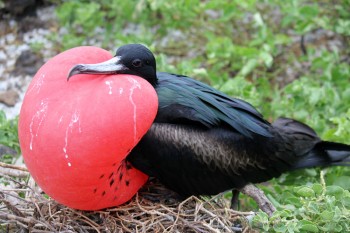
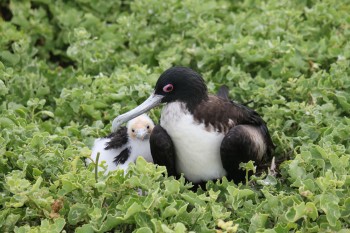
AM: Darwin Bay
This bay was formed when a crater on this island collapsed below sea level. The wet landing is on a beautiful white coral sandy beach. This is a favorite island for birdwatchers as you will find the largest populations of red footed-boobies, masked boobies, wandering tattlers, lava gulls, whimbrels, yellow-crowned, and black-crowned lava herons, and yellow warblers. Continuing on the trail, visitors climb gradually to the edge of the cliff seeing Red-Foots nesting in the Mangrove trees below. Bird watching includes sightings of sharp-beaked finches, large cactus and ground finches, Galapagos doves, and swallow-tailed gulls. Reaching the end the trail at the cliff’s edge offers an incredible view of the island and the many birds living there.
PM: El Barranco
The visitor site of El Barranco is located on the southern part of Darwin Bay on Genovesa Island. The trail, 1.5 km, is on volcanic rock and the tour can be done in about 2 hours. The youngest area of the island, from a geological point of view, lies in this area. The cliffs located in the south are composed of very fragile lava. The natural erosion that has occurred in these lava flows has become the ideal place for nesting Storm Petrels. You can see two species of petrels that nest in cavities and holes in the lava. One of its main predators is the short-eared owl. The red-footed booby nests only in the outer islands of the archipelago, Punta Pitt, Gardner (Floreana), Wolf, Darwin and Genovesa. Also present on this island is the masked booby. During the panga rides along the cliffs fur sea lions can be seen and several species of seabirds.
- B, L, D – Anahi Catamaran
DAY 10 Santa Cruz Island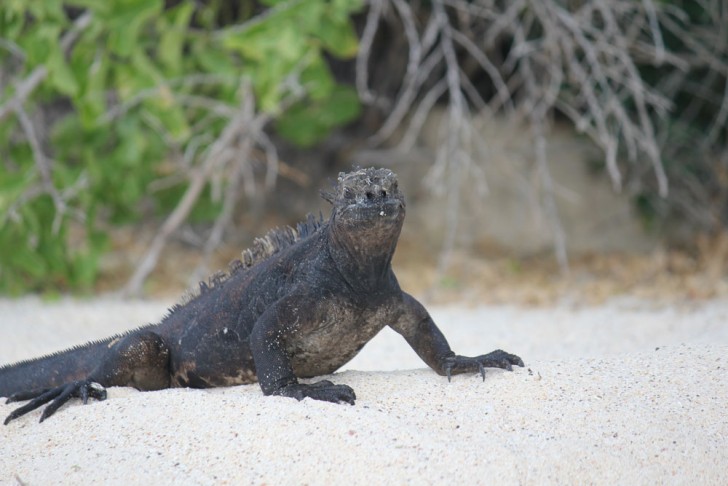
AM: Plazas
Plazas is located to the east of Santa Cruz Island, and forms part of two islands known as Islas Plazas. Despite its small size, some of the most interesting and outstanding species of the Galapagos are found here. The Plazas land iguanas are smaller than its relatives found at other islands. Throughout the island are several hybrid iguanas, a result of crossing a male marine iguana and a female land iguana. They are unique, recognizable at first glance by their black/gray color, with a land iguana’s crest, but face and tail of the marine iguana. The big population of iguanas is due to the presence of tunas, their favorite food. Swallow tailed gulls nesting in the rugged cliffs are seen along with other sea birds such as Audubon shearwaters, red-billed tropicbirds, frigate birds, and brown pelicans
PM: Santa Fe
There are some theories which assure this could be the oldest island in the Archipelago. Santa Fe is the home of a number of endemic species like the Galapagos hawk, Galapagos snake, Galapagos mockingbird, rice rats, and one of the two species of land Iguanas of the islands. After disembarking in the beautiful and clear waters you will be in contact with one of the many sea lion colonies. Along the trail many salt bushes can be seen as well as giant Prickly pear cactus. There are great possibilities of snorkeling with playful sea lions and tropical fishes.
- B, L, D – Anahi Catamaran
DAY 11 San Cristobal Island
AM: Pitt Point
This place is on the north side of San Cristobal. Here there are endemic species such as lava lizards and red-footed boobies. The view is impressive when you walk up to the high part of the island. You may be lucky to see the red-footed booby – the least seen of the bunch. It’s also the home of the Chatham mockingbird, only found here on San Cristobal Island.
PM: Kicker Rock & Lobos Island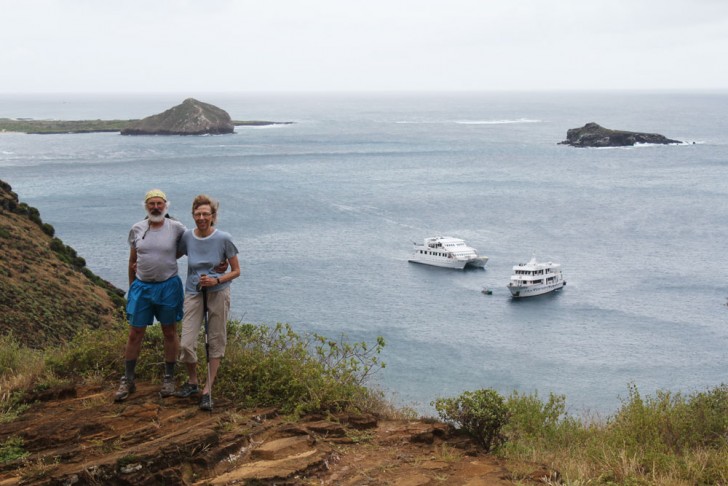
Also known as the Sleeping Lion because of its resemblance, it is located off the coast of San Cristobal. The remains of a lava cone eroded by the sea, the two vertical rocks rising 500 feet from the ocean from a small channel that is navigable by small boats. This Galapagos Islands natural monument has become a favorite sight for cruises due to the many tropical birds, frigates, and boobies that fill the surrounding air. Beneath the sea the nearly crystal waters offer a brilliant show of colorful tropical fish and invertebrates. Isla Lobos is about an hour by boat from Port Baquerizo Moreno. The trail is 850 meters long and the estimated travel time is one hour. There is a small population of blue-footed boobies and common frigate birds nesting on this site. You can observe the two species of sea lions present in the archipelago. During the tour you go through a dry vegetation zone, substrate of volcanic rocks and a sandy area. During the panga tour brown pelicans and several species of shorebirds can be observed; although, snorkeling, it’s common to see juvenile sea lions, manta rays and sea turtles.
- B, L, D – Anahi Catamaran
DAY 12 San Cristobal Island
Today you will visit the Giant Tortoise breeding center before departing for the airport. You’ll take a bus ride, approximately 40 minutes, to the center. Visitors to the Interpretation Center can learn about both the geological and human history of the islands, conservation issues, and natural history. You will also see giant tortoises at the breeding center. After visiting the center, you will be taken to the airport for your return flight to the mainland. Upon a 5:45 p.m. arrival in Quito you will be responsible for checking in for your 11:30 p.m. onward international flight home.
- B
DAY 13 Arrive Home
Hasta Pronto, Knowmad Adventures
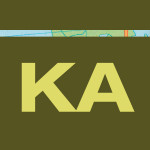 Knowmad Adventures works closely with independent-minded travelers creating innovative trips to South America. Our specialists in Patagonia, Chile, Machu Picchu, Peru, Argentina, the Galapagos Islands, Ecuador and Antarctica are eager to collaborate and create a trip as unique and authentic as you are, and our experienced South American operations team guarantees you get an insider’s perspective, superior values, and a flawlessly operated trip.
Knowmad Adventures works closely with independent-minded travelers creating innovative trips to South America. Our specialists in Patagonia, Chile, Machu Picchu, Peru, Argentina, the Galapagos Islands, Ecuador and Antarctica are eager to collaborate and create a trip as unique and authentic as you are, and our experienced South American operations team guarantees you get an insider’s perspective, superior values, and a flawlessly operated trip.

